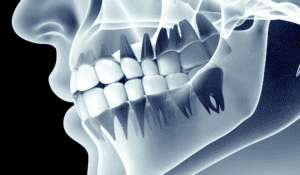Frequent Headaches and Jaw Pain
A medical problem may be the reason for your frequent headaches, neck pain or jaw pain. TMJ or the temporomandibular joint, when damaged or irritated, can cause head, jaw and neck pain. If you have recurring pain in any of these areas, see your dentist or orthodontist right away for further inspection and diagnosis. Many people experience great pain relief from treating their TMJ-TMD.
Symptoms of TMJ-TMD
Some of the symptoms you may experience if you have this disorder are:
While a dentist can suspect that TMJ is causing your mouth and jaw pain, an orthodontist can give a definite diagnosis as well as treat the cause of your head, neck, and jaw pain. This specialist also has several ways of correcting your bite. When treatment is completed, you teeth fit together better, and you experience less pain.
The Cause of TMJ Pain
Any time your temporomandibular joint isn’t able to work correctly, the diagnosis is TMJ. If you continually have problems opening and closing your mouth, or cannot move your jaw from left to right, you may have TMJ. If you have TMJ-TMD, you may also have trouble chewing your food or yawning without significant pain. Causes of TMJ may include:
• Injury to the Jaw.Accidents and other causes of a broken jaw can be the reason for your jaw disorder. Whenever your jaw is damaged or broken, seeing an orthodontist is the first step on the way to having less pain.
Grinding Your Teeth
Many people unknowingly grind their teeth. Teeth grinding can occur during sleep, so an individual may not be aware that they are grinding. Some of the reasons for grinding are:
If you are experiencing recurring headaches, especially first thing after you awaken, contact your orthodontist for a diagnosis of teeth grinding and for a solution to your grinding problem.
Jaw Arthritis
If you suffer from arthritis any place in your body, you may also have arthritis in your jaws. Arthritis occurs when there is swelling or inflammation in a joint. You may be prescribed medication for your arthritis that helps your jaw discomfort. But for a thorough diagnosis and permanent treatment for your TMJ pain, an orthodontist can evaluate the situation and correct the problem in most cases.
Splints for the Jaw
When creating a jaw splint, an orthodontist makes a cast of either your upper or lower teeth. From this impression a device that looks somewhat like a football mouth guard is made. The jaw splint consists of plastic that fits directly onto your teeth and protects your teeth and jaws. It is usually worn at night, especially for those who wake up with morning headaches or jaw pain. Jaw splints can lessen the irritation and pain levels in an individual’s jaws, but doesn’t correct any crooked teeth or other causes that make a person grind their teeth.
Treatments for TMJ Disorders
Traditional Braces
Traditional wire and bracket braces used to correct bite problems remain a frequent choice for those who suffer from TMJ. For those with crooked or misaligned teeth, braces can straighten the teeth and bite and take the pressure from your mouth and jaws.
Brackets are applied to the teeth using a special adhesive. For teeth that are moderate to severely misaligned, traditional braces may be the choice your orthodontist makes to treat your TMJ-TMD.
Invisalign or Incognito Braces
Incognito braces are similar to traditional braces in that brackets and wires move the teeth gently move the teeth into the correct position. In this case, however, the brackets and wires are placed in the back of the teeth rather than on the fronts of the teeth. Incognito braces give the intense straightening powers of braces without the unsightly, visible wires of traditional braces.
Invisalign
Invisalign uses modern technology to take an image of an individual’s teeth. From this image, clear plastic trays are made that gently move a person’s teeth into the correct position. An Invisalign user will need to see the orthodontist every two weeks for an extended period to receive their new tray.



